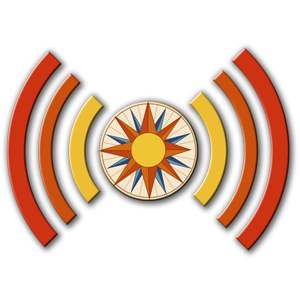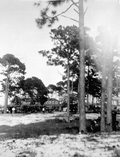| wpa_county_history_lafayette_01 | History of Lafayette County | Text | Cities and towns--History
Florida--Lafayette County
American Civil War (1861-1865)
Works Progress Administration, Historical Records Survey | /fpc/memory/omeka_images/thumbnails/wpa_county_histories.jpg |
History of Lafayette County
- Date
- 1939 (circa)
- Description
- Brief history of Lafayette County, Florida collected by the Works Progress Administration's Historical Records Survey.
- Collection
| N038264 | Hotel- Port St. Joe, Florida.. | | Hotels--Florida--Gulf County--Port Saint Joe | /fpc/general/n038264.gif |
| F2024522 | House used by turpentine workers and industry. | | Industry, Turpentining
Solvents industry
Turpentine industry and trade
Material culture
Craft
Architecture
Dwellings
Houses
Architecture, Domestic | /fpc/folklife/f2024522.gif |
| 025131 | Howell Turpentine Co. double unit government plan still | | Turpentine
Distillation apparatus | /fpc/forestry/025131.gif |
| 024206 | Improvement thinning in longleaf for turpentine and pine | | Longleaf pine
Forest thinning | /fpc/forestry/024206.gif |
| PR25684 | Interior of a turpentine still | | Motion picture locations
Motion pictures--Setting and scenery
Turpentine industry and trade
Turpentining
Distillation apparatus
Lumber | /fpc/prints/pr25684.gif |
| a_s1576_02_c78-047 | Interview with basket maker Lucreaty Clark | Sound | Basket maker
Interviews
Basket work
Basket making
Basketry
African Americans
White oak
Family history
Life histories
Agriculture
Family farming
Seed crops
Food preparation
Food habits
Plants
Flora
Harvesting
Healers
Medicine
Fieldwork | /fpc/memory/omeka_images/thumbnails/audio.jpg |
Interview with basket maker Lucreaty Clark
- Date
- 1978-04-14
- Description
- One audio cassette. Side 1: Clarke, born in Jefferson County in 1904, started making white oak baskets when she was 13. She learned to do so from her parents and grandparents and discusses the types of baskets she made and explains how she makes them. She also discusses her grandparents - - who were once slaves - - and talks about the changes Lamont, Florida, has undergone throughout the years. In addition, she talks about planting and harvesting collards, peas, sweet corn, tomatoes, okra, and snap beans, and she discusses cooking collards and snap beans. Side 2: Clarke continues her discussion on foods and wild plants like the palm tree bud [??], polk salad (poisonous), elephant ears, tanion, and pepper grass. Also, she describes home remedies such as mint, ragweed, tallow, turpentine and camphos, castor oil and turpentine, cow water (for whooping cough), "Yellow Gal" (for fever), asaphidity bag. Further, she talks about growing up on a plantation, travels to Syracuse, New York, New Jersey, and Naples, Florida, talks about her relatives, and discusses finishing baskets by soaking them in water for a brown finish.
- Collection

| a_s1576_22_c86-180 | Interview with blues singer Marie Buggs | Sound | Fieldwork
Interviews
Oral histories
Life histories
Blues (Music)
African Americans
Musical tradition, African diaspora
Music business
Music performance
Performing arts
Turpentine industry and trade
Singing
Juke joints
Jokes
Songs
Gospel songs
Blues singers
Entertainers | /fpc/memory/omeka_images/thumbnails/audio.jpg |
Interview with blues singer Marie Buggs
- Date
- 1984-09-13
- Description
- Two audio cassettes. Born in Deer Park, Florida, in a turpentine camp in 1918, Buggs learned blues from her uncle Blind Blake and blues records. She discusses learning the blues; life at a turpentine camp; juke joints; jokes from the time; various blues singers: W.C. Handy, Blind Blake, Blind Lemon Jefferson, Billie Holiday, and Bessie Smith; blues clubs in Jacksonville; performing in New York City and across Europe; meaning of the blues; various blues styles; reactions to the blues across the world; and performers she met. She also sings several blues songs throughout the interview. A second interview held a couple of months can be found on C86-182. The Folk Arts in Education Project in Duval County was a joint venture between the Duval County School System and the Florida Folklife Program. It was started in 1984 by folklorist David Taylor with funding from the National Endowment for the Arts to add to existing social studies curriculum. The project consisted of field research to identify local traditions and folk artists, a series of five two-day seminars to acquaint teachers with the use of folklore and folk arts, and in-school programs conducted by a folklorist and traditionalist, which included visits by local folk artists. Taylor ran it until 1986. In 1988, Gregory Hansen re-initiated it with minor changes.
- Collection

| a_s1576_22_c86-182 | Interview with blues singer Marie Buggs | Sound | Fieldwork
Interviews
Oral histories
Life histories
Blues (Music)
African Americans
Musical tradition, African diaspora
Music business
Music performance
Performing arts
Turpentine industry and trade
Singing
Juke joints
Jokes
Songs
Gospel songs
Popular songs
Music industry
Nightclubs
Blues singers
Entertainers | /fpc/memory/omeka_images/thumbnails/audio.jpg |
Interview with blues singer Marie Buggs
- Date
- 1984-11-08
- Description
- One audio cassette. Born in Deer Park, Florida, in a turpentine camp in 1918, Buggs learned blues from her uncle Blind Blake and blues records. Much of this interview is a repeat of an earlier one (see C86-180/181), also by David Taylor. Here in addition to her early life and career, Buggs discusses her father's work turpentining and bootlegging; fellow blues performers; learning drums and playing at clubs and strip joints; teaching strippers to dance; performing with Josephine Baker; risqué songs; working with comedians like Nipsy Russell and Red Foxx; minstrel shows; Jacksonville blues clubs; and audiences in Europe. Again, she sings many songs from her repertoire. The Folk Arts in Education Project in Duval County was a joint venture between the Duval County School System and the Florida Folklife Program. It was started in 1984 by folklorist David Taylor with funding from the National Endowment for the Arts to add to existing social studies curriculum. The project consisted of field research to identify local traditions and folk artists, a series of five two-day seminars to acquaint teachers with the use of folklore and folk arts, and in-school programs conducted by a folklorist and traditionalist which included visits by local folk artists. Taylor ran it until 1986. In 1988, Gregory Hansen re-initiated it with minor changes.
- Collection

| a_s1576_22_c86-168b | Interview with dog trainer Vernon Harris | Sound | Fieldwork
Interviews
Oral histories
Life histories
Animals
Working dogs
Animal training
Occupational groups
Community culture
Hunting
Turpentining
Timber
Turpentine industry and trade
Railroads
Leisure
Animal trainers
Dog trainers | /fpc/memory/omeka_images/thumbnails/catalog_audio.jpg |
Interview with dog trainer Vernon Harris
- Date
- 1984-11-13
- Description
- One audio cassette. Harris discusses growing up in Baldwin, and the effects turpentining and railroads have had there; local culture; hunting; dog training; and glass work. The Folk Arts in Education Project in Duval County was a joint venture between the Duval County School System and the Florida Folklife Program. It was started in 1984 by folklorist David Taylor with funding from the National Endowment for the Arts to add to existing social studies curriculum. The project consisted of field research to identify local traditions and folk artists, a series of five two-day seminars to acquaint teachers with the use of folklore and folk arts, and in-school programs conducted by a folklorist and traditionalist which included visits by local folk artists. Taylor ran it until 1986. In 1988, Gregory Hansen re-initiated it with minor changes.
- Collection

 Listen: The Bluegrass & Old-Time Program
Listen: The Bluegrass & Old-Time Program






